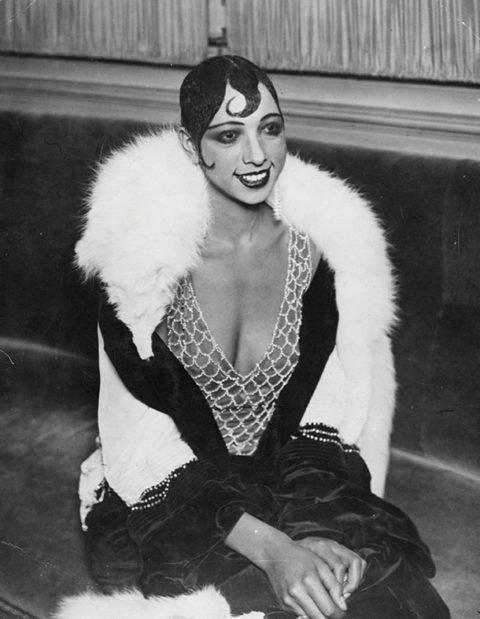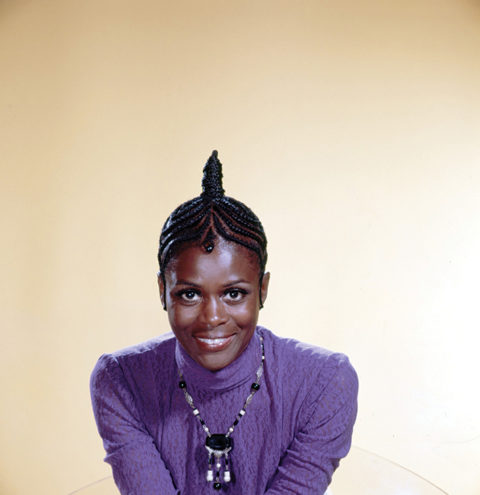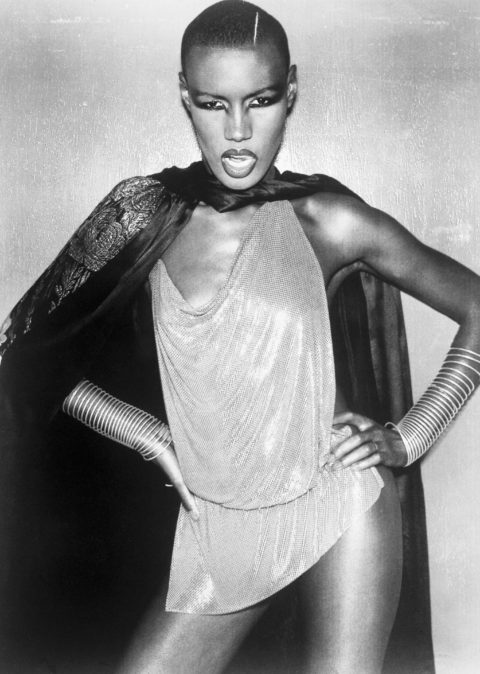From political activists to musical greats, Black trailblazers have challenged the status quo and broken barriers, making it possible for the community to be seen and appreciated. Honouring these individuals is the focus of the Black History & Culture Collection — a photo bank created by Getty that launched last summer with over 30,000 images dating from the 1800s to today. The collection provides educational institutions, media outlets and content creators with free and improved access to rarely seen images for non-commercial purposes. The goal? Fostering more authentic representation and storytelling.
“This is an opportunity to highlight amazing content buried within our archives that shows how Black culture has been involved in the mainstream,” says Cassandra Illidge, vice-president of content and brand partnerships at Getty and the lead on the project. “We have only scratched the surface of the amount of photography and stories that have not been explored around the Black community and its impact on history.”
Illidge and her team partnered closely with internationally recognized researchers, historians, and educators, like visual artist and NYU professor Deborah Willis. “We lived a lifetime of denying Black presence in beauty and fashion. Some of the images that circulated during the 19th [and 20th] centuries dehumanized Black people,” states Willis. “This archive is evidence — simply as that. I see it as a cure for the racist images that have been circulated for hundreds of years.”
Below, we spotlight a handful of Black men and women who have paved paths and influenced beauty and fashion along the way.
1800s
Escaped slave and leading abolitionist Frederick Douglass was said to be one of the most photographed men of the 19th century. Before and during the American Civil War, he fought to end the practice of slavery. “He understood dress as biography,” says Deborah Willis. “In the way that he presented himself, we see how he felt that the caricatures that represented Black people during that time period was a hindrance to his own humanity.”
1920s
Cast members of Broadway producer Lew Leslie’s famous musical revue, ‘Blackbirds Of 1926’, on the roof of the London Pavilion. “This image really resonates with me,” says Willis. “Within a 30-year, post-slavery time period, these Black female performers decided that they didn’t want to be domestic workers, but perform on stage and travel the world. To have a voice and believe in their creativity. This image shows that freedom, from the way they’re dressed to their different hairstyles. These women had a chance to play with beauty and expand their notion of it.”
1920s and 1930s
During the Jazz Age, Josephine Baker’s hair was often styled in flapper-chic kiss-curls. The famed entertainer was the first Black woman to star in a major motion picture — the 1927 silent film Siren of the Tropics.
1930s
Said to be the daughter of a sheik (the head of an Arab tribe), Princess Kouka of Sudan, who simply went by Kouka, arrived on the British film scene in the 1930s and is most known for her role in a film called Jericho (also alternatively titled Dark Sands). She also starred in several Egyptian films.
1940s
Standing in front of her white peers inside a segregated “no Blacks” hotel in L.A., the elegantly coiffed Hattie McDaniel broke the colour barrier at the 12th Academy Awards when she became the first Black person to win an Oscar for her performance as Mammy in Gone With the Wind. Although her role as a house servant is argued to have perpetuated many racial stereotypes, her win cannot be denied as an immense success story within a representation-starved industry.
1950s
An exceptional example of everyday Black joy: civil-rights activist and Nobel Peace Prize recipient Dr. Martin Luther King Jr. relaxing at home with his wife Coretta Scott King (we see you, elegant pin curls) and baby daughter.
1960s
No one did glamour quite like The Supremes trio Mary Wilson, Diana Ross and Florence Ballard. Motown’s most successful act, the girl group became renowned for their maximalist style and stage presence.
1960s
And no one wore beehive-like updos and thick winged black eyeliner quite like The Ronettes.
1960s
From her proud afro and signature head wraps, to her self-penned civil rights anthems, Nina Simone — one of the most sampled jazz artists of all time — never shied away from celebrating her Black culture.
1960s
Princess Elizabeth Bagaya of Toro is a trailblazer for many reasons. The Ugandan lawyer, politician, diplomat and model was the first woman from East Africa to be admitted to the English Bar and, over the years, became a muse for renowned fashion photographers and designers (she was the inspiration behind Zac Posen’s Fall 2016 ready-to-wear collection). She also briefly served as Uganda’s foreign minister in 1974.
1960s
With her March 1966 British Vogue cover, model and actress Donyale Luna became the first model of colour to grace any Vogue magazine cover.
1970s
Cicely Tyson became one of the first mainstream Black actors to confidently embrace her natural hair on national television when she wore an afro for her role in the 1963 drama East Side/West Side. She would later debut cornrows in the 1972 film Sounder.
1970s & 1980s
Grace Jones’s imprint on style is everlasting. Her geometric haircut, club-kid makeup and avant-garde fashion sense embodied the opulent disco culture of the ’70s and ’80s.
1980s & 1990s
“Now, who flat top rules in ’89?” rapper Big Daddy Kane sang in his 1989 track “Warm It Up, Kane.” His sense of style — high-top fade hairstyles, chunky chains and four-finger rings — set a number of late-’80s and early-’90s hip-hop trends.
1990s
Naomi Campbell’s nearly four-decade-long modelling career has been filled with many barrier-breaking moments (like being the first Black model to open for Prada and land the cover of French Vogue). She also helped set many iconic beauty trends, such as dark, exaggerated lip liner that ruled the 1990s.
1990s
When supermodel Iman launched her eponymous makeup line Iman Cosmetics in 1994 — a line celebrated for offering products that flatter Black and Brown skin — she became a beauty pioneer during a time when barely any beauty brands catered to the needs of women of colour.
1990s
Here’s to the queen of protective styles. From micro to box to knotless, braided hairdos have become synonymous with R&B singer Brandy ever since she sprang onto the music scene in the 1990s.
2000s & 2010s
When Solange Knowles dropped relaxed strands and straight wigs in the late 2000s, she became a natural-hair icon. Since growing out her coils, she has rocked a myriad of afro-textured hairstyles, from an ultra-fluffy ’fro to two-strand twists.
2010s
In 2012, actor Viola Davis turned heads when she decided to ditch her wigs and hairpieces and go natural for the Oscars red carpet. She’s been serving endless coily-hair looks ever since.
2020s
In 2021, Amanda Gorman became the youngest inaugural poet in U.S. history when she performed at the swearing in of President Joe Biden and Vice-President Kamala Harris. Another significant detail: her braided updo adorned with gold jewellery and a red Prada headband. It was the first time a protective braided hairstyle had ever graced the inaugural stage.
2020s
Since emerging on the Hollywood scene, actor Jodie Turner-Smith has commanded attention with her breathtaking fashion and beauty looks.
A condensed version of this article first appeared in FASHION’s Winter issue. Find out more here.
The post Everyone Should Know About Getty’s Black History & Culture Collection appeared first on FASHION Magazine.
Use left/right arrows to navigate the slideshow or swipe left/right if using a mobile device




















